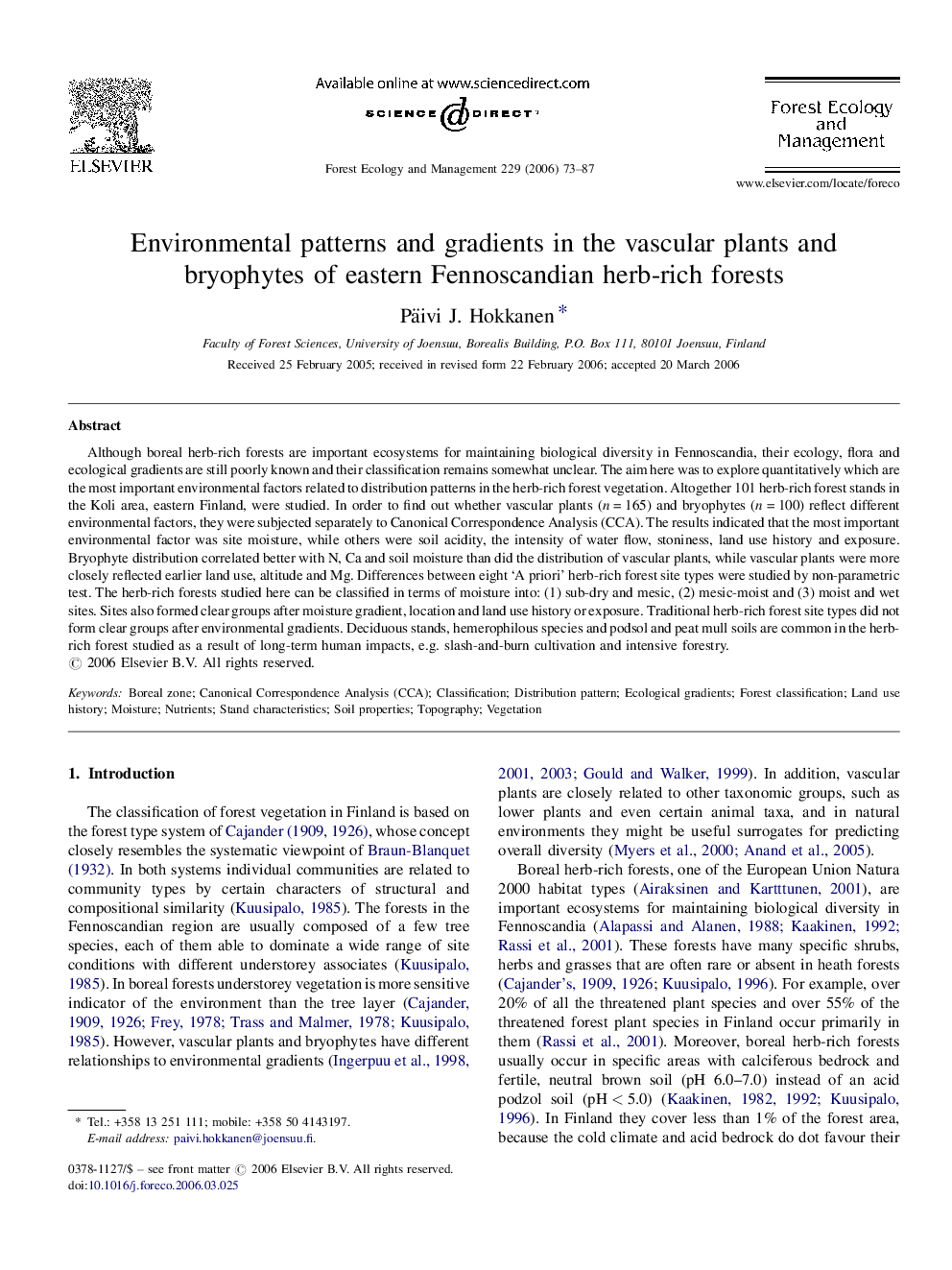| Article ID | Journal | Published Year | Pages | File Type |
|---|---|---|---|---|
| 90826 | Forest Ecology and Management | 2006 | 15 Pages |
Although boreal herb-rich forests are important ecosystems for maintaining biological diversity in Fennoscandia, their ecology, flora and ecological gradients are still poorly known and their classification remains somewhat unclear. The aim here was to explore quantitatively which are the most important environmental factors related to distribution patterns in the herb-rich forest vegetation. Altogether 101 herb-rich forest stands in the Koli area, eastern Finland, were studied. In order to find out whether vascular plants (n = 165) and bryophytes (n = 100) reflect different environmental factors, they were subjected separately to Canonical Correspondence Analysis (CCA). The results indicated that the most important environmental factor was site moisture, while others were soil acidity, the intensity of water flow, stoniness, land use history and exposure. Bryophyte distribution correlated better with N, Ca and soil moisture than did the distribution of vascular plants, while vascular plants were more closely reflected earlier land use, altitude and Mg. Differences between eight ‘A priori’ herb-rich forest site types were studied by non-parametric test. The herb-rich forests studied here can be classified in terms of moisture into: (1) sub-dry and mesic, (2) mesic-moist and (3) moist and wet sites. Sites also formed clear groups after moisture gradient, location and land use history or exposure. Traditional herb-rich forest site types did not form clear groups after environmental gradients. Deciduous stands, hemerophilous species and podsol and peat mull soils are common in the herb-rich forest studied as a result of long-term human impacts, e.g. slash-and-burn cultivation and intensive forestry.
